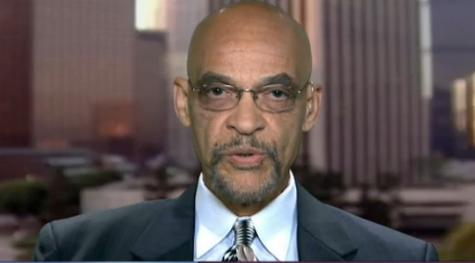Earl Ofari Hutchinson
“He’s a security guard.” Witnesses to the altercation that cost Jemel Roberson his life repeatedly shouted out to Midlothian police officers on the scene at Manny’s Blue Room in Robbins, Illinois. Their shouts that Roberson was in effect almost one of them meant little. He was slain by police.
Roberson was indeed almost one of them. He was a security guard. He was subduing a suspect in an altercation at the bar and grill where he worked as a security officer. He was wearing a hat with security on it. He was licensed to carry a firearm. He was well thought of in the community.
This, and his peacekeeping heroism, meant nothing. Roberson’s slaying added yet another horrific dimension to the wanton slaying of black men by police officers. That is Roberson was slain in uniform while black.
The Roberson slaying follows an all too familiar pattern. His family immediately filed a million-dollar lawsuit against Midlothian. The police chief promised a thorough investigation, turning it over to a county and state investigating agency. There was some public outrage over the killing. The safe bet, though, is that that’s exactly where things will remain.
The reasons for this are just as familiar and predictable. Midlothian Police officials issued the vaguest statement about the circumstances of the shooting. They did not immediately identify the officers involved in the killing. The shield laws that are in place in some states bar police from telling anything about the officers. Those shield laws are under fire because under the guise of privacy and with the unyielding backing of police unions they give officers an unfair protective wrap from transparency on prior misconduct, violation of department rules, or just bad behavior, It also prevents disclosure of whether or what kind of discipline was imposed on the officers for those infractions.
When the book is tightly closed on the public’s right to know about officer misconduct, then it’s only a short step to an officer committing a heinous act of violence with no one in a position to know telling why.
When the officers that gunned down Roberson are identified, then what? No matter how blatant and outrageous the killing, cops are almost never charged. Despite the charges against officers in Dallas and Pittsburgh in the slaying of unarmed black men in those cities this year, this pattern firmly holds. In the majority of cases in which prosecutors have refused to file charges against any of the officers involved in the deaths of men such as Roberson, the stock reasons they give are that there were no credible tapes, eyewitness testimony, or reports that prove the officers acted recklessly, the victims resisted arrest, or that the officers legitimately feared for their life.
There is much wiggle room for officers in the Roberson slaying to tailor a defense that makes prosecution almost impossible. Though Roberson was a security officer, and licensed to carry a gun, unfortunately it’s that gun that officers will say was the problem. How could they know when they were called to quell a disturbance at the bar that Roberson was not an armed suspect who posed a direct threat to the officers? The shouts of the witnesses that Roberson was a security guard don’t cancel that out.
They’ll simply utter the words in their defense that are uttered by nearly every officer in every slaying of an unarmed civilian, “I feared for my life or the life of others.”
These words are codified in law in many states. With only slight variations in the states the words are that an officer can use deadly force when he or she reasonably believes it’s necessary to protect life. The operative words are “reasonably believes.” Translated, that means that there is no written code, rule, or guideline for what exactly reasonable belief is or means. It’s purely a judgment call by the officer the moment he or she draws his or her pistol and opens fire. The litany of “reasonable beliefs” can fill up a small phone book. The suspect was reaching for a knife, gun, toothpick, holding a cell phone, tugging at his waistband, had his hands in his pocket, there was sudden movement of his vehicle.
In the case of the Roberson killing, the officer’s defense almost certainly will be that they perceived a threat from Roberson. There are witnesses but in the absence of a videotape of the killing and the events surrounding it, it will essentially be their word against that of the witnesses who tried to warn them that Roberson was not a lawbreaker.
The deadly scorecard of police killing of civilians, the majority of whom are unarmed, now numbers hundreds and the deadly number continues to climb. Roberson added one more to that list. The tragedy of his slaying is made even more tragic because he was the good guy trying to keep the peace. Even that and his uniform didn’t count in the end.
Earl Ofari Hutchinson is an author and political analyst. He is the author of Why Black Lives Do Matter (Middle Passage Press). He is a weekly co-host of the Al Sharpton Show on Radio One. He is the host of the weekly Hutchinson Report on KPFK 90.7 FM Los Angeles and the Pacifica Network.

